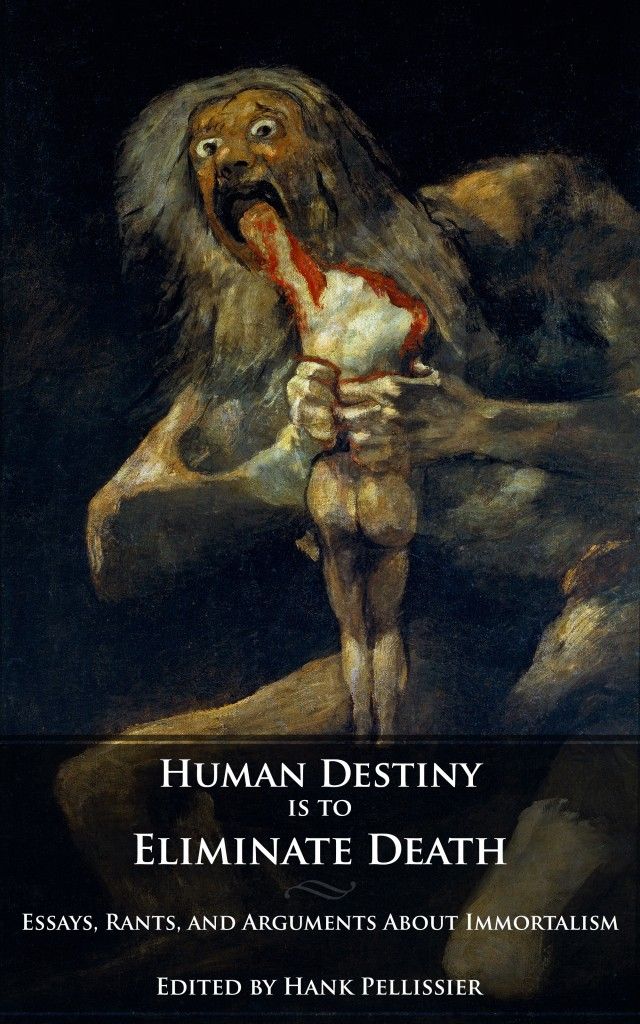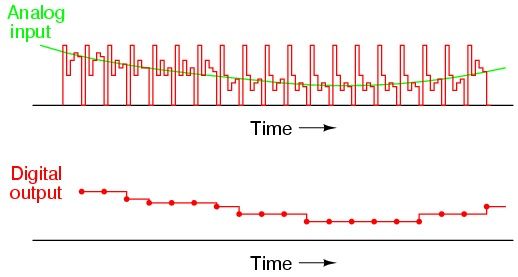Page 10995
Jul 4, 2013
Aging is bad for fitness. Why has evolution put up with it?
Posted by Josh Mitteldorf in categories: biological, evolution
Aging destroys fitness. How could aging have evolved? Below is my answer to this question. This is mainstream science from peer-reviewed journals [Ref 1, Ref 2, Ref 3] , but it is my science, and as Richard Feynman warned us*, I’m the last one who can be objective about the merits of this theory. — Josh Mitteldorf
Too fit for its own good
In 1874, a swarm of Rocky Mountain Locusts descended on the American midwest. They covered the sky and shadowed the earth underneath for hundreds of miles. A single cloud was larger than the state of California. Once on the ground, they ate everything that was green, leaving behind a dust bowl. The earth was thick with egg masses, ready to renew the plague the following year.
Laura Ingalls Wilder wrote in her childhood memoir (in the third person)
Continue reading “Aging is bad for fitness. Why has evolution put up with it?” »
Jul 3, 2013
Human Destiny is to Eliminate Death — Essays, Rants & Arguments on Immortalism (Edited Volume)
Posted by Franco Cortese in categories: biological, biotech/medical, education, ethics, fun, futurism, human trajectories, life extension, media & arts, neuroscience, philosophy, policy, rants
 Immortal Life has complied an edited volume of essays, arguments, and debates about Immortalism titled Human Destiny is to Eliminate Death from many esteemed ImmortalLife.info Authors (a good number of whom are also Lifeboat Foundation Advisory Board members as well), such as Martine Rothblatt (Ph.D, MBA, J.D.), Marios Kyriazis (MD, MS.c, MI.Biol, C.Biol.), Maria Konovalenko (M.Sc.), Mike Perry (Ph.D), Dick Pelletier, Khannea Suntzu, David Kekich (Founder & CEO of MaxLife Foundation), Hank Pellissier (Founder of Immortal Life), Eric Schulke & Franco Cortese (the previous Managing Directors of Immortal Life), Gennady Stolyarov II, Jason Xu (Director of Longevity Party China and Longevity Party Taiwan), Teresa Belcher, Joern Pallensen and more. The anthology was edited by Immortal Life Founder & Senior Editor, Hank Pellissier.
Immortal Life has complied an edited volume of essays, arguments, and debates about Immortalism titled Human Destiny is to Eliminate Death from many esteemed ImmortalLife.info Authors (a good number of whom are also Lifeboat Foundation Advisory Board members as well), such as Martine Rothblatt (Ph.D, MBA, J.D.), Marios Kyriazis (MD, MS.c, MI.Biol, C.Biol.), Maria Konovalenko (M.Sc.), Mike Perry (Ph.D), Dick Pelletier, Khannea Suntzu, David Kekich (Founder & CEO of MaxLife Foundation), Hank Pellissier (Founder of Immortal Life), Eric Schulke & Franco Cortese (the previous Managing Directors of Immortal Life), Gennady Stolyarov II, Jason Xu (Director of Longevity Party China and Longevity Party Taiwan), Teresa Belcher, Joern Pallensen and more. The anthology was edited by Immortal Life Founder & Senior Editor, Hank Pellissier.
This one-of-a-kind collection features ten debates that originated at ImmortalLife.info, plus 36 articles, essays and diatribes by many of IL’s contributors, on topics from nutrition to mind-filing, from teleomeres to “Deathism”, from libertarian life-extending suggestions to religion’s role in RLE to immortalism as a human rights issue.
The book is illustrated with famous paintings on the subject of aging and death, by artists such as Goya, Picasso, Cezanne, Dali, and numerous others.
The book was designed by Wendy Stolyarov; edited by Hank Pellissier; published by the Center for Transhumanity. This edited volume is the first in a series of quarterly anthologies planned by Immortal Life
Jun 25, 2013
Sexbots, Ethics, and Transhumans
Posted by Clyde DeSouza in categories: ethics, evolution, futurism, media & arts, robotics/AI
“I zoomed in as she approached the steps of the bridge, taking voyeuristic pleasure in seeing her pixelated cleavage fill the screen.
What was it about those electronic dots that had the power to turn people on? There was nothing real in them, but that never stopped millions of people every day, male and female, from deriving sexual gratification by interacting with those points of light.
Tags: AI, Clyde DeSouza, Dirrogate, longevity, sexbot ethics, sexbots, transhumanism
Jun 22, 2013
Extreme Lifespans via Exposure to Information
Posted by Marios Kyriazis in categories: biotech/medical, evolution, life extension
It may be possible one day to use effective biotechnological therapies in order to achieve extreme lifespans. In the meantime, instead of just waiting for these therapies, it may be more fruitful to live a life of constant stimulation, hyper-connection and avoidance of regularity. This is something that everybody can do today, and may have a direct impact upon radical life extension, not only for the individual but also for society.
For some time now I have been advocating the notion that exposure to meaningful information may be one way of achieving radical life extension. By meaningful information I mean anything that requires action, and not just feeding your brain with routine sets of data. Examples of this include being hyper-connected in a digital world, an enriched environment (both in the personal space and in society as a whole), a hormetic lifestyle, behavioural models such as a goal-seeking behaviour, search for excellence, and a bias for action, as well as the pursuit innovation, diversification, creativity and novelty. Most importantly, the avoidance of routine and mediocrity.
This information-rich lifestyle up-regulates the function of the brain and may have an impact upon cell immortalisation. In my latest paper (http://arxiv.org/abs/1306.2734 I provide an explanation of the exact mechanisms. I argue that the relentless exposure to useful information creates new and persisting demands for energy resources in order for this information to be assimilated by the neurons. If this process continues for some time, there will come a point where our biological mechanisms will undergo a phase transition, in effect creating a new biology. Not one based on sex and reproduction but one based on information and somatic survival.
One possible mechanism involves the immortalisation sequences of germ cells. As we know, the DNA in germ cells is essentially immortal because it is somehow able to repair age-related damage effectively. Recent research shows that some of these immortalisation mechanisms do not originate from the germ cells but from the somatic cells! In other words, our bodily cells create biological material such as error-free sequences of DNA and instead of using this themselves for their own survival, they pass it on to the germ cells to assure the survival of the species. This means that the germ-line remains immortal whereas the bodily cells eventually age and die.
Continue reading “Extreme Lifespans via Exposure to Information” »
Jun 17, 2013
Help Conquer Death with Grants & Research Funding from LongeCity!
Posted by Franco Cortese in categories: biological, finance, homo sapiens, life extension
LongeCity has been doing advocacy and research for indefinite life extension since 2002. With the Methuselah Foundation and the M-Prize’s rise in prominence and public popularity over the past few years, it is sometimes easy to forget the smaller-scale research initiatives implemented by other organizations.
LongeCity seeks to conquer the involuntary blight of death through advocacy and research. They award small grants to promising small-scale research initiatives focused on longevity. The time to be doing this is now, with the increasing popularity and public awareness of Citizen Science growing. The 2020 H+ Conference’s theme was The Rise of the Citizen Scientist. Open –Source and Bottom-Up organization have been hallmarks of the H+ and TechProg communities for a while now, and the rise of citizen science parallels this trend.
Anyone can have a great idea, and there are many low-hanging fruits that can provide immense value and reward to the field of life extension without necessitating large-scale research initiatives, expensive and highly-trained staff or costly laboratory equipment. These low-hanging fruit can provide just as much benefit as large scale ones – and, indeed, even have the potential to provide more benefit per unit of funding than large-scale ones. They don’t call them low-hanging fruit for nothing – they are, after all, potentially quite fruitful.

In the past LongeCity has raised funding by matching donations made by the community to fund a research project that used lasers to ablate (i.e. remove) cellular lipofuscin. LongeCity raised $8,000 dollars by the community which was then matched by up to $16,000 by SENS Founation. A video describing the process can be found here. In the end they raised over $18,000 towards this research! Recall that one of Aubrey’s strategies of SENS is to remove cellular lipofuscin via genetically engineered bacteria. Another small-scale research project funded by LongeCity involved mitochondrial uncoupling in nematodes. To see more about this research success, see here.
Continue reading “Help Conquer Death with Grants & Research Funding from LongeCity!” »
Jun 16, 2013
Vaccinate against B.S.O.D — Insure your Memories.
Posted by Clyde DeSouza in categories: ethics, evolution, futurism, robotics/AI, singularity
“…and on the third day he rose again…”
If we approach the subject from a non theist point of view, what we have is a re-boot. A restore of a previously working “system image”. Can we restore a person to the last known working state prior to system failure?
As our Biological (analog) life get’s more entwined with the Digital world we have created, chances are, there might be options worth exploring. It all comes down to “Sampling” — taking snapshots of our analog lives and storing them digitally. Today, with reasonable precision we can sample, store and re-create most of our primary senses, digitally. Sight via cameras, sound via microphones, touch via haptics and even scents can be sampled and/or synthesized with remarkable accuracy.
Continue reading “Vaccinate against B.S.O.D — Insure your Memories.” »
Jun 12, 2013
Transhumanism, Eugenics and the Dirrogate Immigration Challenge
Posted by Clyde DeSouza in categories: ethics, evolution, robotics/AI, transparency
Transhumanism, Eugenics and IQ:
The aim of this short essay is not to delve into philosophy, yet on some level it is un-avoidable when talking about Transhumanism. An important goal of this movement is the use of technology for the enhancement, uplifting and perhaps…the transcendence of the shortcomings of the human condition. Technology in general seems to be keeping pace and is in sync with both Moore’s law and Kurzweil’s law and his predictions.
Yet, there is an emerging strain of Transhumanists — propelled by radical ideology, and if left un-questioned might raise the specter of Eugenics, wreaking havoc and potentially inviting retaliation from the masses. The outcome being, the stymieing human transcendence. One can only hope that along with physical augmentation technology and advances in bio-tech, Eugenics will be a thing of the past.
Soon enough, at least IQ Augmentation technology will be within reach (cost-wise) of the common man — in the form of an on-demand, non-invasive, memory and intelligence augmentation device. So… will Google Glass or similar Intelligence Augmentation device, forever banish the argument for “intellectual” Eugenics? Read an article on 4 ways that Google glass makes us Transhuman.
Continue reading “Transhumanism, Eugenics and the Dirrogate Immigration Challenge” »
Tags: AI, Clyde DeSouza, Dirrogate, eugenics, future, politics, technology, transhumanism
Jun 10, 2013
Intimations of Imitations: Visions of Cellular Prosthesis & Functionally-Restorative Medicine
Posted by Franco Cortese in categories: biological, biotech/medical, chemistry, engineering, futurism, life extension, nanotechnology, neuroscience
In this essay I argue that technologies and techniques used and developed in the fields of Synthetic Ion Channels and Ion Channel Reconstitution, which have emerged from the fields of supramolecular chemistry and bio-organic chemistry throughout the past 4 decades, can be applied towards the purpose of gradual cellular (and particularly neuronal) replacement to create a new interdisciplinary field that applies such techniques and technologies towards the goal of the indefinite functional restoration of cellular mechanisms and systems, as opposed to their current proposed use of aiding in the elucidation of cellular mechanisms and their underlying principles, and as biosensors.
In earlier essays (see here and here) I identified approaches to the synthesis of non-biological functional equivalents of neuronal components (i.e. ion-channels ion-pumps and membrane sections) and their sectional integration with the existing biological neuron — a sort of “physical” emulation if you will. It has only recently come to my attention that there is an existing field emerging from supramolecular and bio-organic chemistry centered around the design, synthesis, and incorporation/integration of both synthetic/artificial ion channels and artificial bilipid membranes (i.e. lipid bilayer). The potential uses for such channels commonly listed in the literature have nothing to do with life-extension however, and the field is to my knowledge yet to envision the use of replacing our existing neuronal components as they degrade (or before they are able to), rather seeing such uses as aiding in the elucidation of cellular operations and mechanisms and as biosensors. I argue here that the very technologies and techniques that constitute the field (Synthetic Ion-Channels & Ion-Channel/Membrane Reconstitution) can be used towards the purpose of the indefinite-longevity and life-extension through the iterative replacement of cellular constituents (particularly the components comprising our neurons – ion-channels, ion-pumps, sections of bi-lipid membrane, etc.) so as to negate the molecular degradation they would have otherwise eventually undergone.
While I envisioned an electro-mechanical-systems approach in my earlier essays, the field of Synthetic Ion-Channels from the start in the early 70’s applied a molecular approach to the problem of designing molecular systems that produce certain functions according to their chemical composition or structure. Note that this approach corresponds to (or can be categorized under) the passive-physicalist sub-approach of the physicalist-functionalist approach (the broad approach overlying all varieties of physically-embodied, “prosthetic” neuronal functional replication) identified in an earlier essay.
The field of synthetic ion channels is also referred to as ion-channel reconstitution, which designates “the solubilization of the membrane, the isolation of the channel protein from the other membrane constituents and the reintroduction of that protein into some form of artificial membrane system that facilitates the measurement of channel function,” and more broadly denotes “the [general] study of ion channel function and can be used to describe the incorporation of intact membrane vesicles, including the protein of interest, into artificial membrane systems that allow the properties of the channel to be investigated” [1]. The field has been active since the 1970s, with experimental successes in the incorporation of functioning synthetic ion channels into biological bilipid membranes and artificial membranes dissimilar in molecular composition and structure to biological analogues underlying supramolecular interactions, ion selectivity and permeability throughout the 1980’s, 1990’s and 2000’s. The relevant literature suggests that their proposed use has thus far been limited to the elucidation of ion-channel function and operation, the investigation of their functional and biophysical properties, and in lesser degree for the purpose of “in-vitro sensing devices to detect the presence of physiologically-active substances including antiseptics, antibiotics, neurotransmitters, and others” through the “… transduction of bioelectrical and biochemical events into measurable electrical signals” [2].
Tags: bio-organic chemistry, biotechnology, cellular prosthesis, Cortese Franco, functional replication, functional restoration, Functionally Restorative Medicine, Ion Channel & Membrane Reconstitution, Life extension, medicine, molecular prosthesis, nano, nanobiotechnology, nanomedicine, nanotechnology, Neuroscience, Respirocyte, Robert A. Freitas Jr., supramolecular chemistry, Synthetic Ion Channel
Jun 8, 2013
Update on the LHC-Danger – after Half a Year
Posted by Otto E. Rössler in categories: existential risks, particle physics
1) CERN officially attempted to produce ultraslow miniature black holes on earth. It has announced to continue doing so after the current more than a year-long break for upgrading.
2) Miniature black holes possess radically new properties according to published scientific results that go unchallenged in the literature for 5 years: no Hawking evaporation; unchargedness; invisibility to CERN’s detectors; enhanced chance of being produced.
3) Of the millions of miniature black holes hoped to have been produced, at least one is bound to be slow enough to stay inside earth to circulate there.
4) This miniature black hole circulates undisturbed – until it captures the first charged quark. From then on it grows exponentially doubling in size in months at first, later in weeks.
Continue reading “Update on the LHC-Danger – after Half a Year” »













